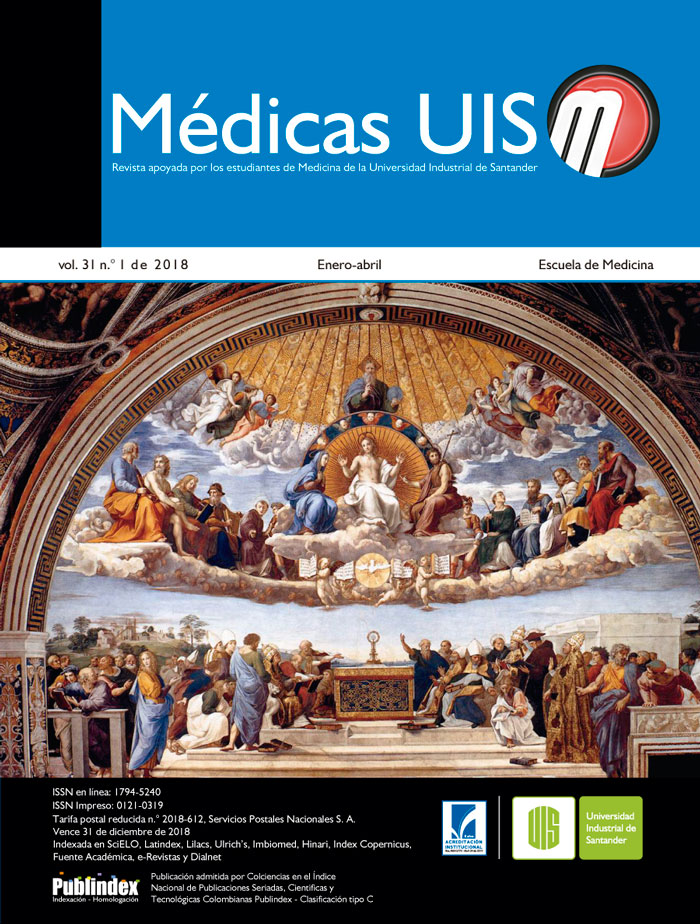Resumen
Los quistes pulmonares unilaterales son un hallazgo inusual en neonatos, desde el punto de vista del radiólogo es difícil distinguir los quistes pulmonares congénitos de los adquiridos. El diagnóstico definitivo es histológico. Se presenta un recién nacido prematuro de 28 semanas con síndrome de dificultad respiratoria en relación con múltiples quistes pulmonares. Las radiografías iniciales del tórax mostraron un quiste pulmonar solitario izquierdo. Requirió de forma escalonada asistencia respiratoria, junto con rayos X seriados donde se observa la presencia de neumotórax y el aumento del tamaño de la lesión quística inicial con presencia de nuevos quistes. La tomografía computarizada confirmó la presencia del quiste solitario del lóbulo inferior izquierdo y varias colecciones de gas intersticial con puntos centrales de tejidos blandos con relación a enfisema pulmonar intersticial y se planteó como diagnóstico diferencial malformación adenomatoidea quística. La lesión fue extirpada quirúrgicamente en vista del deterioro clínico. La histología confirmo la presencia de enfisema pulmonar intersticial persistente. MÉD.UIS. 2018;31(1):65-70.
Referencias
respiratory disorders. A prospective study. Acta Paediatr Scand.
1981; 70(6):773-83.
2. Pérez-Rodríguez J, Elorza D. Dificultad respiratoria en el recién
nacido. An Pediatr Contin. 2003; 1(2):57-66.
3. Edwards MO, Kotecha SJ, Kotecha S. Respiratory distress of the
term newborn infant. Paediatr Respir Rev. 2013;14(1):29-36.
4. Solís G, Mantecón L. Tratamiento de los escapes aéreos en
neonatología. An Pediatr Contin. 2013; 11(6): 350-3.
5. Verma RP, Chandra S, Niwas R, Komaroff E. Risk factors and clinical
outcomes of pulmonary interstitial emphysema in extremely low
birth weight infants. J Perinatol. 2006; 26(3):197-200.
6. Vellanki H, Antunes M, Locke RG, McGreevy T, Mackley A,
Eubanks JJ, et al. Decreased incidence of pneumothorax in VLBW
infants after increased monitoring of tidal volumes. Pediatrics.
2012; 130(5): 1352-8.
7. Wheeler KI, Klingenberg C, Morley CJ, Davis PG. Volumetargeted
versus pressure-limited ventilation for preterm infants:
a systematic review and meta-analysis. Neonatology. 2011;
100(3):219-27.
8. Chalak LF, Kaiser JR, Arrington RW. Resolution of pulmonary
interstitial emphysema following selective left main stem
intubation in a premature newborn: an old procedure revisited.
Paediatr Anaesth. 2007;17(2):183-6.
9. Belcher E, Abbasi MA, Hansell DM, Ffolkes L, Nicholson AG,
Goldstraw P. Persistent interstitial pulmonary emphysema
requiring pneumonectomy. J Thorac Cardiovasc Surg.
2009;138(1):237-9.
10. Coto-Cotallo GD, López J, Fernández B, Álvarez F, Ibáñez A. Recién
nacido a término con dificultad respiratoria: enfoque diagnóstico
y terapéutico. En: Protocolos Diagnóstico Terapéuticos de la
Asociación Española de Pediatría: Neonatología. 2ª ed. Protocolos
de la AEP; 2008. p. 285-305.
11. Silverman GA. Escapes aéreos: Neumotórax, enfisema intersticial
pulmonar, neumomediastino, neumopericardio. En: Cloherty JP,
Stark AR. Manual de cuidados neonatales. 4ª ed. Madrid España:
Masson; 2005. p. 406-12.
12. Agrons GA, Courtney SE, Stocker JT, Markowits RI. From the
Archives of the AFIP: Lung Disease in Premature Neonates:
Radiologic-Pathologic Correlation. Radiographics 2005;
25(4):1047–73.
13. Donnelly LF, Lucaya J, Ozelame V, Frush DP, Strouse PJ, Sumner
TE, et al. CT Findings and Temporal Course of Persistent
Pulmonary Interstitial Emphysema in Neonates: A Multi
Institutional Study. AJR Am J Roentgenol 2003; 180(4):1129 –33.
14. Pantoja M, Camberos O, Arteaga R. Enfisema pulmonar
intersticial. Rev Soc Bol Ped 2005; 44(1): 36 –7.
15. Cleveland RH. A radiologic update on medical diseases of the
newborn chest. Pediatr Radiol 1995; 25(8):631–37.
16. Boothroyd AE, Barson AJ. Pulmonary interstitial emphysema: a
radiological and pathological correlation. Pediatr Radiol 1988;
18(3):194–99.
17. Stocker JT. Cystic Lung Disease in Infants and Children. Fetal
Pediatr Pathol 2009; 28(4):155–84.
18. Jabra AA, Fishman EK, Shehata BM, Perlman EJ. Localized
persistent pulmonary interstitial emphysema: CT findings with
radiographic-pathologic correlation. AJR Am J Roentgenol 1997;
169(5):1381–84.
19. Donnelly LF, Frush DP. Localized radiolucent chest lesions in
neonates: causes and differentiation. AJR Am J Roentgenol 1999;
172(6):1651–1658.
20. Gürakan B, Tarcan A, Arda IS, Coşkun M. Persistent pulmonary
interstitial emphysema in an unventilated neonate. Pediatr
Pulmonol 2002; 34(5):409–11.
21. Taylor G, Atalabi OM, Estroff JA. Imaging of congenital
diaphragmatic hernias. Pediatr Radiol 2009; 39(1):1–16.
22. Kuhlman JE, Reyes BL, Hruban RH, Askin FB, Zerhouni EA,
Fishman EK et al. Abnormal Air-Filled Spaces in the Lung.
Radiographics 1993; 13(1): 47-75.
23. Winters WD, Effmann EL. Congenital Masses of the Lung:
Prenatal and Postnatal Imaging Evaluation. J Thorac Imaging
2001; 16(4):196-206.
24. Journy N, Ancelet S, Rehel JL, Mezzarobba M, Aubert B, Laurier
D, et al. Predicted cancer risks induced by computed tomography
examinations during childhood, by a quantitative risk assessment

Esta obra está bajo una licencia internacional Creative Commons Atribución 4.0.
Derechos de autor 2018 Revista Médicas UIS
